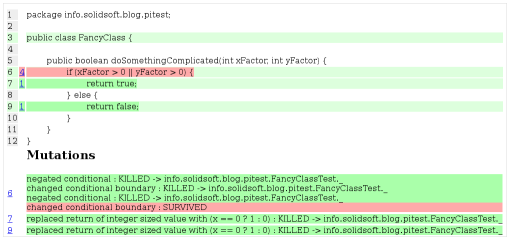Introduction to mutation testing with PIT and TestNG
PIT is “a fast bytecode based mutation testing system for Java that makes it possible to test the effectiveness of your unit tests”. It is a very young project, but very promising. It offers a set of mutation operators which among others modify conditional statements, mathematical operations, return values and methods calls.
Starting with the recently released version 0.25 PIT (experimentally) supports TestNG based tests (in addition to JUnit based). To use it from Maven it is required to add pitest-maven plugin to pom.xml:
<plugin>
<plugin>
<groupid>org.pitest</groupid>
<artifactid>pitest-maven</artifactid>
<version>0.25</version>
</plugin>
</plugin>
In many cases it would be enough. inScopeClasses (mutable classes and tests for running) and targetClasses (only candidates for mutation) by default use project groupId and usually can be omitted. There are several options that can be configured in the plugin configuration. “mvn org.pitest:pitest-maven:mutationCoverage” performs modified tests and generates mutation report which by default is saved in target/pit-reports/yyMMddHHmm directory.
A sample report (click to enlarge) for a specified class shows both line coverage and mutation coverage. Despite 100% line coverage (lines with light green background), PIT found that a test data set does not cover properly boundary conditions.

Reference: Introduction to mutation testing with PIT and TestNG from our JCG partner Marcin Zajaczkowski at the Solid Soft blog.





